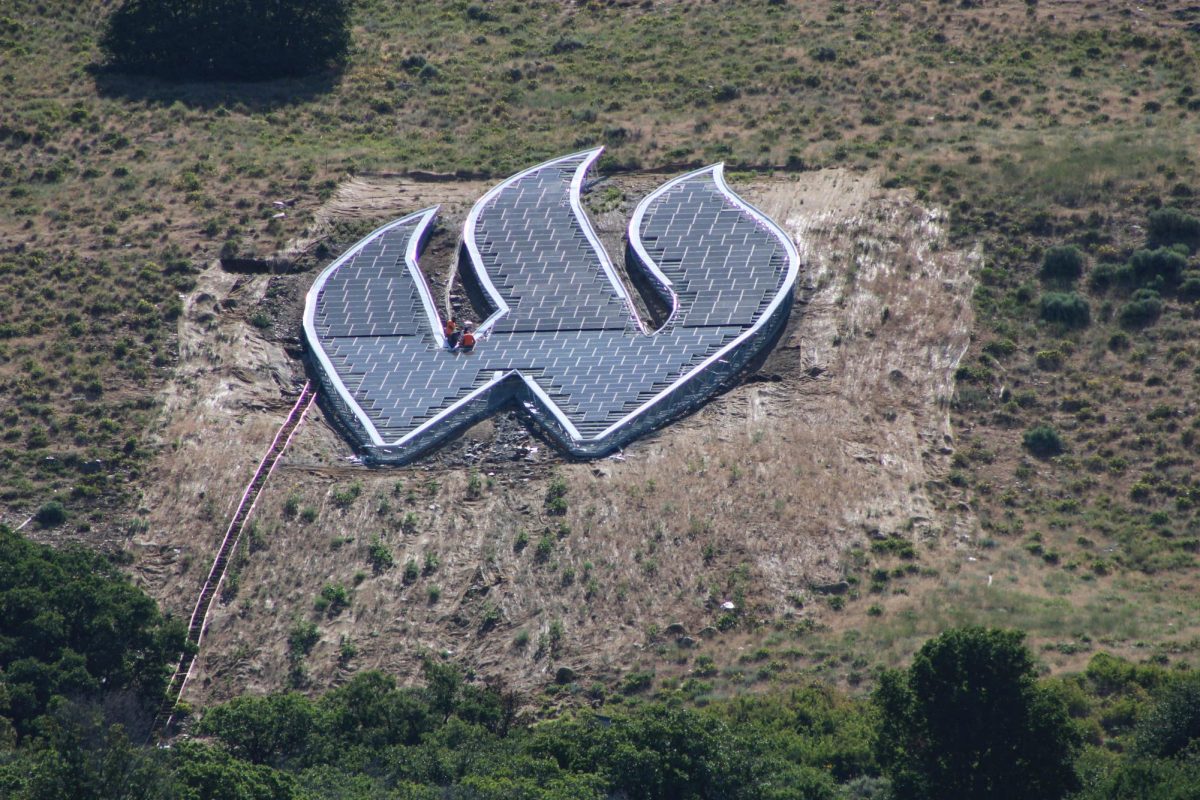
The top of Weber State University campus was abuzz with excitement on Friday night as students, faculty and the community gathered together for the ninth annual Physics Open House.
The Physics Open House was held on Friday, Oct. 9 and was an event to showcase the different aspects of physics for the community. Physics is a natural science which consists of the study of matter, motion, energy, force and nature.
Andria Spencer, a physics major sophomore at WSU who attended the event, knew she wanted to be a physics major since she was 15 because of a physics teacher she had in high school. “We did airsoft cannons, gunpowder cannons and rockets,” Spencer described.
“We also did liquid nitrogen in class and flamethrowers and it was just lots of fun,” Spencer said.
There were a lot of hands on activities for all ages to get involved in. There was a trebuchet launching water balloons at the side of the science building, Alka-Seltzer rockets that people could build and launch, robotics autonomous vehicles, drones, mini-lectures on magnetism, lasers and high altitude balloons.
There were people of all ages in attendance from young children to grandparents, as well as some WSU students. People who attended the event were there for a variety of reasons.

“Physics is a key part of engineering,” Caleb Catrell, a freshman studying engineering at WSU, said.
The activities and presentations were very hands-on. Many of the kids participated in the lectures by volunteering for demonstrations or answering questions that the professors posed to the audience, and they showed great excitement when asked to participate.
Lisa Finlinson, who is a physics and applied mathematics major, attended the open house because of her love of physics.
“I love it for the content. It gives me a challenge and physics is fun,” Finlinson said.
The presentations consisted of demonstrations such as watching static electricity light a light-bulb or learning why a cat always lands on its feet. The presentations were similar to miniature versions of real classes taught at WSU.
Stacy Palen, the director of the Ott Planetarium and also a professor in the Physics Department, said that her favorite class to teach is the intro sequence for majors which is the very first year of physics classes.
“We often have people come in and they take the class and they don’t really know what they’re getting into and they think they want to do something else,” Palen said. “Then they think that physics is for them.”
The Ott Planetarium was open during the event as well and had shows every 30 minutes. The Ott Planetarium was built in 1969 when the Lind Lecture Hall was built, funded from part of a federal grant. Normally it’s open by appointment or reservation.

One of the shows, titled Expanded View, was about different telescopes in space that can show researchers different things.
“The Hubble Telescope is a light telescope—it shows us things in the visible region; the Spitzer telescope is an infrared telescope, and the Chandra telescope is an x-ray telescope,” Murielle Shallbetter, a student in the Physics Department at WSU said.
Shallbetter described that from each of these different views, researchers can study a more complete picture of the universe.
“The open house is our way of thanking the community for all of the support we receive by sharing our enthusiasm for physics and astronomy,” Professor John Armstrong of the physics department said.













